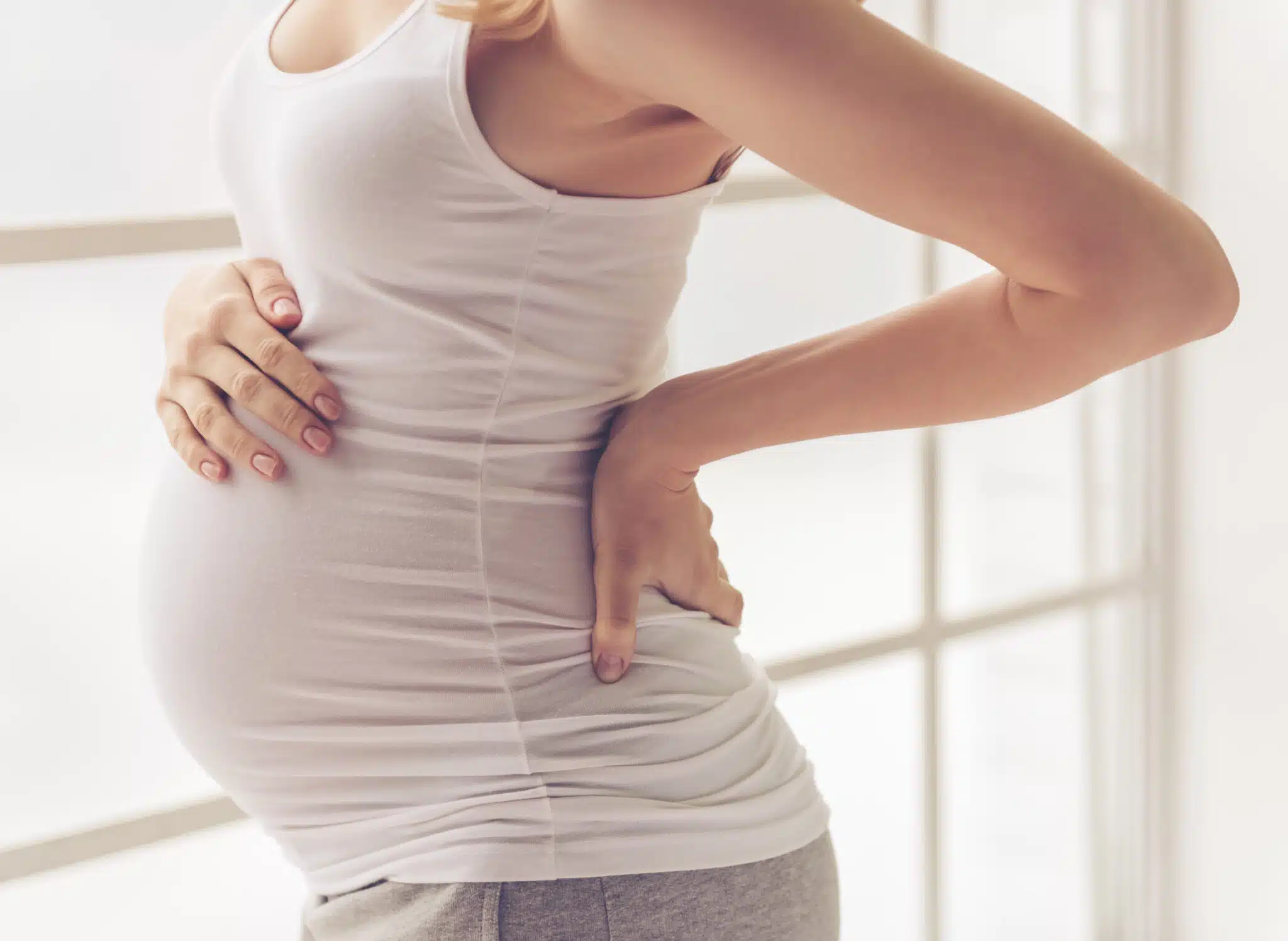By AMC intern Adria Major and AMC program coordinator Fitim Sadiku
Back pain is a frequent complaint during pregnancy. It often emerges in the second or third trimesters. The pain can be mild to severe and continue after birth.
The World Health Organization (WHO) recommends regular exercise throughout pregnancy to prevent lower back pain. You should consult a physiotherapist about which exercises are suitable and how to do them correctly.
Options include:
- Walking
- Strength training
- Stretching
- Swimming
Regular movement helps maintain flexibility, muscle tone and good posture during pregnancy, which can help reduce back pain. In some cases, acupuncture, physical therapy or the use of a support belt may be recommended.
Other ways to prevent or reduce back pain during pregnancy include:
- Lift with care
Try not to lift anything that weighs more than a few kilograms. If you need to lift something heavy (like a small child), make sure to do it properly. Bend at the knees, not the waist. Squat down and lift with your legs, not your back.
- Good posture
Maintain proper posture and avoid pushing your belly too far forward. Avoid sitting or standing for long periods. If you have to stand for a long time, take frequent breaks. Choose an ergonomic chair with proper back support, or place a pillow behind your lower back.
- Massage and warm packs
A gentle massage can help relax the muscles. You can also use a warm pack for localized muscle relaxation.
- Sleep comfortably
Sleep on your preferred side with at least one knee bent. For extra comfort, use a pregnancy pillow, or place one pillow between your knees and another under your belly. A medium-firm mattress provides the best support.
- Avoid high heels
Skip the heels and wear shoes with good arch support.
- Consult your doctor
Do not take any medication without first consulting your doctor. Back pain can also be a sign of a urinary tract infection. If you have any questions, concerns, severe or persistent pain or other symptoms, talk to your doctor.
When to Stop Physical Activity and Seek Medical Advice:
- Vaginal bleeding
- Dizziness or fainting sensation
- Difficulty breathing
- Chest pain
- Headache
- Muscle weakness
- Pain or swelling (e.g., in the calves)
- Uterine contractions
- Decreased fetal movement
- Vaginal fluid leakage
- Neurological symptoms
References:
World Health Organization. (2016). WHO recommendations on antenatal care for a positive pregnancy experience. https://apps.who.int/iris/bitstream/handle/10665/250796/9789241549912-eng.pdfWorld Health Organization. (2016). WHO recommendations on antenatal care interventions for maternal and newborn health 2016. https://apps.who.int/iris/bitstream/handle/10665/250800/WHO-RHR-16.12-eng.pdfWorld Health Organization. (2016). Standards for improving quality of maternal and newborn care in health facilities. https://cdn.who.int/media/docs/default-source/sexual-health/stillbirth/who-mca-17-10-eng.pdfWorld Health Organization Regional Office for Africa. (2018). Draft antenatal care guidelines: Adapted from WHO recommendations on antenatal care for a positive pregnancy experience. https://www.afro.who.int/sites/default/files/2019-06/Draft%20ANC%20Guidelines%202018%20-%20Final%20Copy.pdf
Physiopedia. Low Back Pain and Pregnancy.
Patient Information. Pelvic Health Physiotherapy Antenatal Advice for Women Experiencing Back or Pelvic Pain. East Sussex HealthCare.

